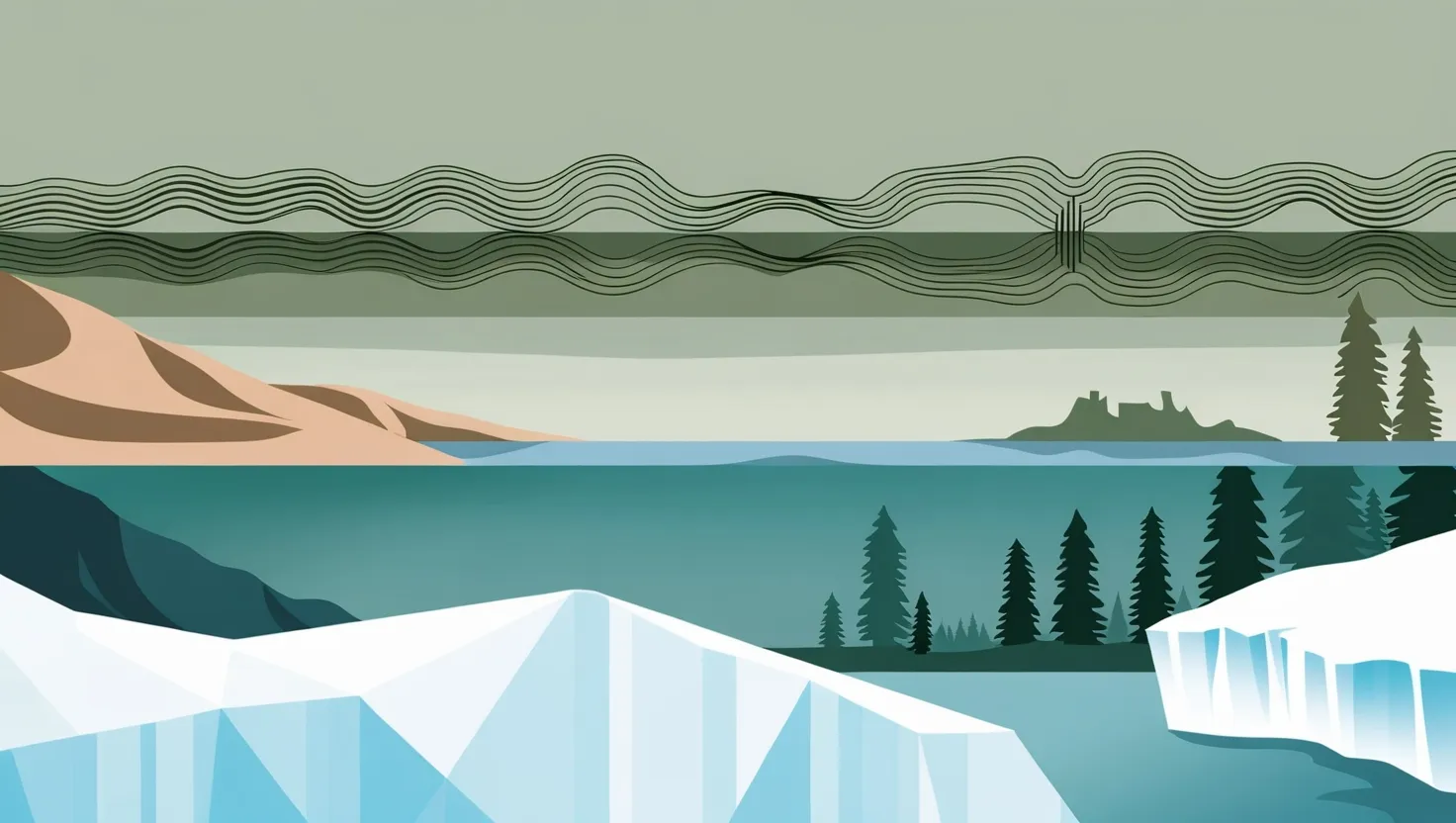What fascinates me most about the world isn’t what we’ve explained, but what keeps slipping through our fingers—those mysteries that simply refuse to fit into tidy explanations. Everyone’s drawn to the spectacular, but I’ve found the real wonders often hum quietly in the background, waiting for us to notice. When it comes to sound, nature stages its own peculiar concerts. Some of these are so baffling that the world’s best scientists, armed with supercomputers and decades of research, are left shrugging their shoulders. Why do some sounds persistently linger just out of reach for our instruments—or our understanding?
Consider the Global Hum. Have you ever found yourself in a silent room at night and then wondered if there’s a faint vibration somewhere just beneath perception? In towns from Taos to Toronto, people report hearing a low, persistent rumble. Most folks never notice it, but for a small fraction of the population, the hum can be as real—and as maddening—as tinnitus. Investigators have pointed at everything from underground gas pipelines and distant machinery to neurological quirks and even the Earth’s own electromagnetic heartbeat. The truth is, every promising explanation falls apart somewhere. For every town with a known industrial culprit, there are equally isolated places with no obvious source. Is the hum a byproduct of modern infrastructure, a quirk of human hearing, or is the planet humming its own tune? Even decades of acoustic analysis only deepen the puzzle.
“Not everything that can be counted counts, and not everything that counts can be counted.” —Albert Einstein
Now and then, the sky itself seems to erupt with noise. Skyquakes—sonic booms that rattle windows and send people scrambling to news sites—have startled seaside villages and mountain towns alike. These booms come out of clear, blue skies and have no clear link to aircraft, meteorites, or other easy explanations. Some blame atmospheric temperature inversions, others mutter about undersea methane explosions. But here’s the kicker: the places skyquakes occur most often don’t line up with these theories. Even more puzzling, some of the oldest reports predate industrial disruptions and supersonic flight altogether. It’s as if the atmosphere occasionally decides to express itself for reasons it isn’t sharing. I find myself wondering: could the explanation lie deep in the chemistry of air, something we’ve not yet measured?
Then picture a desert, dunes rising against a cloudless sky. On certain days, as sheets of sand slide down steep slopes, the whole landscape begins to sing—a rumbling note, sometimes as loud as a passing car. Over thirty deserts around the world have been caught performing this odd trick. Yet not all sand dunes sing, even when they’re physically identical. Laboratory recreations point to the size, shape, and smoothness of the grains, but change even one subtle variable and the sound evaporates. Is there a chance that the secret lies in how the grains move collectively, or perhaps in the underground structure below the dunes? Modern physics can tell us how to build a violin. But how do you build a dune that sings?
“Nature uses only the longest threads to weave her patterns, so each small piece of her fabric reveals the organization of the entire tapestry.” —Richard Feynman
Let’s shift to the ocean’s edge, where some of the smallest creatures create performances as dazzling as any rock concert. Snapping shrimp, for example, are notorious for their deafening underwater clicks. What’s truly perplexing is that in certain waters, these clicks are accompanied by a visible burst of bioluminescent light. The synchronization of sound and light is so precise that researchers can’t explain how the shrimp control it. Known mechanisms of bioacoustics and bioluminescence don’t intersect this way. Are the shrimp using a biological process we’ve not yet discovered, or are they tapping into subtle electrical phenomena in seawater? The more we zoom in, the stranger the relationship between sound and light grows.
Let me ask you—what do you think happens when a giant iceberg breaks apart in the pitch-black vastness of the polar sea? Hydrophones sometimes pick up sharp, staccato “gunshots” as ice shatters. But on occasion, these events produce complex harmonic tremors that echo for miles, with patterns that defy simple models of cracking and melting. The frequencies don’t match what we’d expect from solid ice breaking, nor do they always dampen in a predictable way. Some believe these harmonics may be born from resonance deep within the ice or even the unique geometry of underwater crevasses. Yet the phenomenon remains one of the more neglected sonic riddles in glaciology.
“The most beautiful thing we can experience is the mysterious. It is the source of all true art and science.” —Albert Einstein
Forests, too, aren’t as quiet as they appear. Old-growth woodlands can transmit ultra-low-frequency pulses during rapid temperature changes, especially at dawn or dusk. Some suggest the trees themselves are responsible—perhaps in the way water moves through their xylem, perhaps due to mechanical stress in the wood. Others point toward underground tectonic shifts. Despite careful experiments, no single model accounts for when or why these pulses appear. I’ve even heard stories from field researchers who claim to “feel” these vibrations in their bones before they ever spot them on their instruments.
How do you explain something that only some people sense, and only some of the time? For every one of these phenomena, the most surprising thing is how little progress we’ve made—despite decades of technological leaps. Maybe our equipment isn’t subtle enough yet. Maybe the answer lies in how humans perceive the world alongside instruments, and not just in cold readings.
I often return to a question: What if these are signals from processes the planet has always staged, but which we’re only now, with our crowded cities and restless curiosity, starting to notice? The more we study, the more it becomes clear that sound isn’t just about what our ears hear. Vibration, resonance, acoustic energy—these shape everything from animal migration to weather, yet so much remains invisible to our models.
Each of these natural sound riddles serves as a reminder that our planet’s voice is still full of unexpected complexity. It’s humbling, isn’t it? For every solved equation, nature throws us a new riddle in the form of a sound nobody was expecting. What would happen if we listened more closely—not just with devices, but with a willingness to reconsider the boundaries between noise, music, and meaning?
“As soon as you trust yourself, you will know how to live.” —Johann Wolfgang von Goethe
There may come a day when we have all the answers. For now, though, I relish the idea that the world keeps a few of its mysteries on repeat—echoes and vibrations as old as time, waiting for curious ears, and perhaps a little humility, to listen in.






